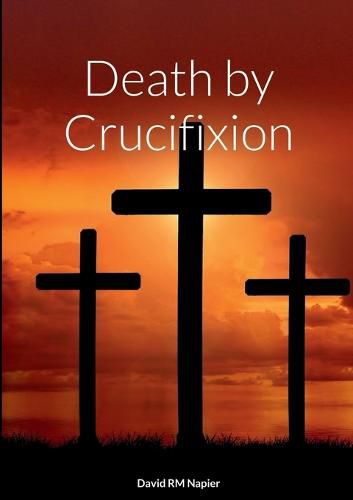Readings Newsletter
Become a Readings Member to make your shopping experience even easier.
Sign in or sign up for free!
You’re not far away from qualifying for FREE standard shipping within Australia
You’ve qualified for FREE standard shipping within Australia
The cart is loading…






This title is printed to order. This book may have been self-published. If so, we cannot guarantee the quality of the content. In the main most books will have gone through the editing process however some may not. We therefore suggest that you be aware of this before ordering this book. If in doubt check either the author or publisher’s details as we are unable to accept any returns unless they are faulty. Please contact us if you have any questions.
Oxford Languages says crucifixion is 'an ancient form of execution in which a person was nailed or bound to a cross. There is little evidence that the Romans used to flog their victims before crucifixion.' (See notes on scourging) 'Crucifixion' comes from the Latin word crucifxio or crucifixus which means 'fixed to a cross'. An article in learnreligions.com says, 'The Jewish historian Josephus, who witnessed live crucifixions during Titus' siege on Jerusalem, called it "the most wretched of deaths." Victims were usually beaten and tortured by various means and then forced to carry their own cross to the crucifixion site. Because of the long, drawn-out suffering and horrible manner of execution, it was viewed as the supreme penalty by the Romans.' Simple explanation? If, as mentioned earlier, we don't delve any further, yes. Yet, even in these opening paragraphs questions can be raised (and will be raised later) about: - Nailed or bound - Cross or a simple stake - Flogging or not - Carrying their cross Each of these will be discussed, because there are many sources that debate not only these aspects of crucifixion, but many more. We later see how at one time, so many were crucified at the same time Jerusalem was devoid of trees, yet there is one basic, but important question - was anyone crucified and how can we prove it?
$9.00 standard shipping within Australia
FREE standard shipping within Australia for orders over $100.00
Express & International shipping calculated at checkout
This title is printed to order. This book may have been self-published. If so, we cannot guarantee the quality of the content. In the main most books will have gone through the editing process however some may not. We therefore suggest that you be aware of this before ordering this book. If in doubt check either the author or publisher’s details as we are unable to accept any returns unless they are faulty. Please contact us if you have any questions.
Oxford Languages says crucifixion is 'an ancient form of execution in which a person was nailed or bound to a cross. There is little evidence that the Romans used to flog their victims before crucifixion.' (See notes on scourging) 'Crucifixion' comes from the Latin word crucifxio or crucifixus which means 'fixed to a cross'. An article in learnreligions.com says, 'The Jewish historian Josephus, who witnessed live crucifixions during Titus' siege on Jerusalem, called it "the most wretched of deaths." Victims were usually beaten and tortured by various means and then forced to carry their own cross to the crucifixion site. Because of the long, drawn-out suffering and horrible manner of execution, it was viewed as the supreme penalty by the Romans.' Simple explanation? If, as mentioned earlier, we don't delve any further, yes. Yet, even in these opening paragraphs questions can be raised (and will be raised later) about: - Nailed or bound - Cross or a simple stake - Flogging or not - Carrying their cross Each of these will be discussed, because there are many sources that debate not only these aspects of crucifixion, but many more. We later see how at one time, so many were crucified at the same time Jerusalem was devoid of trees, yet there is one basic, but important question - was anyone crucified and how can we prove it?